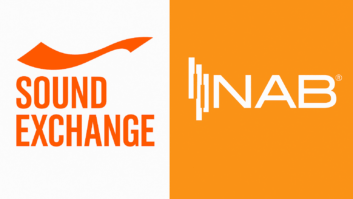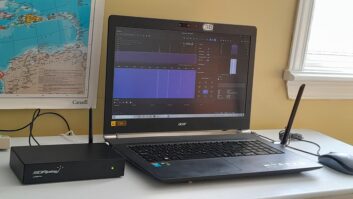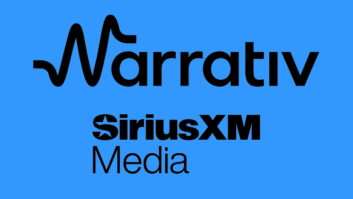WASHINGTON — Is the royalty deal between Clear Channel and Nashville indie record label Big Machine a game-changer? And what’s to become of radio’s efforts to persuade the wireless industry to embed FM chips in cellphones?
These topics are separate yet related, and both are very much on the minds of industry executives. In fact, some radio executives spoke about the issues during a House Communications & Technology Subcommittee hearing on the future of audio last month.
The royalty deal makes Big Machine the first record label to receive royalties from radio for not only for digital airplay but also broadcast. Big Machine agreed to a cap on earnings from digital stations like Clear Channel’s iHeartRadio streaming service — at what Wall Street analysts believe is a lower rate than other record labels are getting.
Both companies said the deal is about growing revenues for digital in the future. Terms were not made public.
The agreement bypasses the political fight that’s been going on for years between record companies — who want royalty payments for on-air performances — and broadcasters, who say such royalties would be another “tax” on top of what they pay to organizations representing songwriters and music publishers, like BMI, ASCAP and SESAC.
The deal also allows Clear Channel and Big Machine to bypass SoundExchange, the nonprofit organization tasked by Congress to collect online radio royalties for performers of streamed music.

From left: Commonwealth Broadcasting President/CEO Steve Newberry, NAB President/CEO Gordon Smith and Emmis Communications Chairman Jeff Smulyan compare notes before the House Communications & Technology Subcommittee hearing on the future of audio. Photo by Leslie Stimson. The recording industry loves the deal. But Recording Industry Association of America Chairman/CEO Cary Sherman told lawmakers there should be an industry-wide solution; he questioned whether other radio groups could structure a deal as Clear Channel could.
Commonwealth Broadcasting President/CEO Steve Newberry, testifying for NAB during the hearing, spoke carefully about the deal. He described it a “free-market transaction” between two entities. NAB has taken no position on the arrangement.
Speaking of the performance rights issue in general, Newberry said NAB remains opposed to radio paying another royalty. Music airplay “is the engine that drives the sale of music,” said Newberry. “We believe the promotion is equal to and exceeds” the value of a proposed royalty for airplay, he said.
Newberry said the current process for setting copyright royalties is dysfunctional and actually hinders stations’ ability to innovate in the digital arena and should be changed.
Pandora Founder and Chief Strategy Officer Tim Westergren agreed; but he wants Congress to treat all forms of audio the same when it comes to setting royalty rates. Last year, with revenues of $274 million, Pandora paid out half of that amount, $137 million, in performance fees to artists or labels.
As each new form of audio was invented, copyright law was changed. As a result, Westergren said, new media are penalized in the rules for music royalties, while old media are advantaged. “It’s time to level the playing field.”
When Pandora goes before the Copyright Royalty Board in 2014, it plans to push for a rate based on percentage of revenue instead of per-track, CFO Steve Cakebread recently told Wall Street analysts.
FM CHIPS
Meanwhile radio clearly has a ways to go in persuading wireless carriers and manufacturers to embed FM chips in mobile devices. The industry hopes Congress will provide more muscle.
Broadcasters want discussion and a congressional study, though Emmis Communications Chairman Jeff Smulyan reiterated several times during the hearing that NAB is not asking for a chip mandate.
CEA and CTIA don’t believe that. CEA President/CEO Gary Shapiro asked rhetorically why radio doesn’t seek an FM chip in lights, pillows and other objects. He calls the issue a reaction to radio’s declining listening over the years. Smulyan refuted that, saying listening is not lower.
Christopher Guttman-McCabe, vice president of regulatory affairs for CTIA, The Wireless Association, said numerous cellphones offer FM capability; a June Best Buy circular listed 29, he said. According to a recent count by CTIA, FM radio capability is available in 59 models in the United States.
But that’s out of thousands of devices sold, said Smulyan, while acknowledging that the number of FM-equipped models has increased since broadcasters began pushing for it. CTIA blames low consumer demand; but Smulyan said the feature isn’t promoted in domestic cellphone stores as it is overseas.
To make his point, he displayed two new Samsung Galaxy Notes, a smartphone with some of the features of a tablet. The model purchased in London has an activated FM chip; the one purchased here does not, he said.
Shapiro, though, suggests that radio can create demand for FM chips in phones by promoting it aggressively on their stations.
Emphasizing the importance of the hearing as consumers use more and more technology, committee member Rep. Mary Bono Mack, R-Calif. said, “Nobody cares what’s under the hood anymore. We care about what’s in the dash and about cupholders.”
In a show of how important the discussion is, several NAB executives turned out to support Newberry and Smulyan. Among those in the room were President/CEO Gordon Smith, CTO Kevin Gage and EVP of Radio John David. Eddie Fritts, former NAB leader and now a lobbyist, was there as well.







